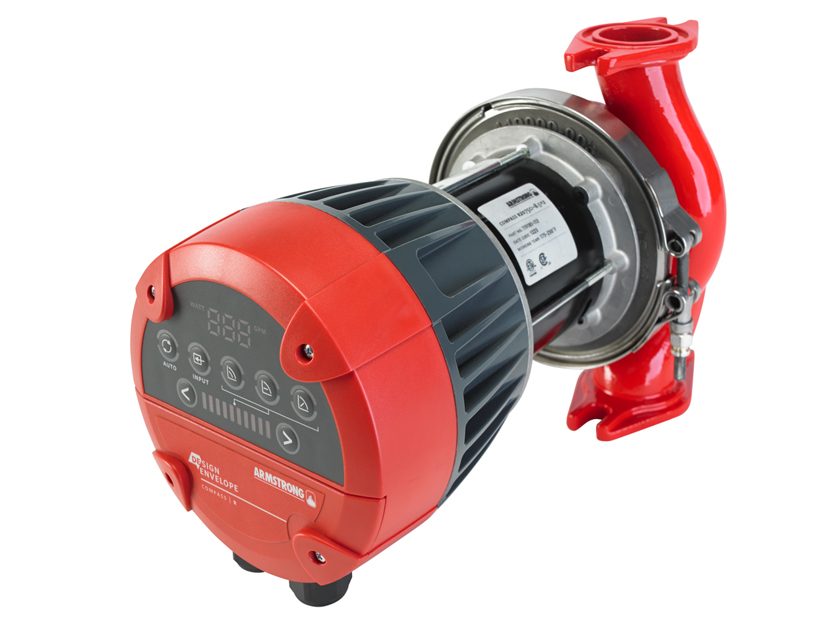Circulating Revenue
New circulator technology can help contractors enhance their bottom line and provide building owners with significant energy savings.

Circulators aren’t traditionally the first thing that comes to mind when contractors think about how they might improve their business operations and help building owners gain significant energy savings. Although circulators are often considered an important component of an HVAC system, they are not often thought of as a significant money-maker for the contractor or an energy-saver for the customer.
When it becomes time to replace an old circulator, it has long been normal industry practice to replace ‘like-with-like.’ Similarly, when a circulator is needed for a new installation, many contractors specify the ‘tried-and-true’ brands that they are used to — and with good reason.
The decision seems easy because the customer is pre-disposed to accept the same circulator, so there is often no need to recommend switching to a new brand, model or size. There’s no uncertainty regarding the installation, whether or not any special tools are required, or whether the circulator will fit into the available space and deliver the required flow and head.
However, new technology that was previously only available on larger pumps now makes it possible for contractors to provide their customers with more than 50 percent greater energy savings, while also enhancing the company’s bottom line. Equally important, the new energy savings features minimize the related carbon footprint.
And some technologically advanced circulators can also help contractors position themselves as energy efficiency experts rather than simply the installing contractor. Imagine being able to promote your services to a prospective customer on the basis of energy savings and related payback over time.
How is all this possible? Here are a few of the technologically advanced features available on the new evolution of circulators and the resulting benefits to contractors and building owners.
New energy saving, variable speed motors
Contractors should be sure to select circulators that have high efficiency ECM motors and variable speed (VSP) control based on a quadratic pressure curve. The ECM motor alone can provide 30 percent more energy efficiency, while the variable speed controls can add an additional 25 percent efficiency savings.
There is also the cost savings of avoiding installation of a valve, because of the embedded capability for speed control.
Advanced controls and data-driven monitoring save energy and money
Some of the new evolution circulators come with onboard control panels with multiple options and an auto mode that adjusts speed to match flow requirements. Imagine being able to know, with certainty, that the control capabilities of the circulator will match the requirements of almost any installation — be it fixed speed or variable speed.
New evolution circulators also offer easily discernible error codes for situations such as low-voltage, locked rotor or insufficient fluid levels. These circulators can exchange signals with modern-day boilers to not only operate efficiently itself, but also through communications, improve the operation and effectiveness of the boiler.
Some new circulators use a dry rotor design for better reliability and resistance to particulate matter, but also offer an automatic ‘jogging’ feature to dislodge any material that might block the impeller. Lastly, imagine being able to avoid multiple callbacks to an installation for minor adjustments to output — with only one button required to increase flow.
Over time, matching system demand to specific needs creates significant energy savings. And, some of the new circulators allow contractors to remotely diagnose a basic set of issues. Instead of silently and mysteriously stopping, a circulator can issue discernible error codes so that a service contractor could arrive on site fully apprised of the problem and ready to make repairs.
One size can fit all
Some of the new circulators also offer bolt-for-bolt connection compatibility with a range of installed 3-piece circulators and come with replaceable mechanical seals. These features provide several benefits:
• Contractors can significantly reduce their inventory and improve their cash flow by stocking fewer models and in some instances, just one model. They can also reduce ‘windshield time’ with fewer trips to and from wholesaler locations to pick up individual models.
• Installation time is greatly reduced as there is no need to break the piping to accommodate different configurations or flange-to-flange dimensions.
• Due to ease-of-operation, field service personnel quickly become familiar with how to install and commission the new pump technology. There is no need for expensive and time-consuming training.
All the features and benefits outlined above are now available in these ‘next evolution’ circulators. Modern, advanced circulators offer a host of different technologies and features to make them more valuable, flexible, durable, reliable and user-friendly.
So, although it may cost less initially to replace an outdated model with like-for-like, contractors owe it to themselves and their customers to become familiar with the new offerings, at least enough to explain them and offer the option. Unprecedented value and energy savings are available for contractors if they are willing to advocate for and to their customers.
Simply put, if contractors are to keep the long-term needs and interests of the customer in mind, and share some responsibility for carbon footprint minimization, they have to trust the new technology available in modern circulators, and they have to be willing to educate the end customer and persuade them to make the smarter choice.




